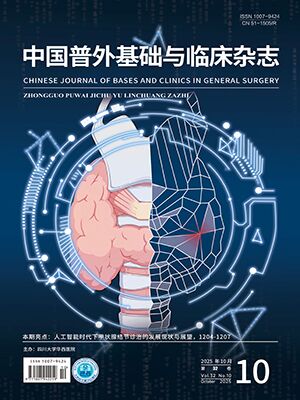Objective To construct a prognostic prediction model for hepatocellular carcinoma (HCC) based on disulfidptosis-associated genes (DAGs) and ferroptosis-associated genes (FAGs) using data from The Cancer Genome Atlas (TCGA) and International Cancer Genome Consortium (ICGC) databases and explore the immune characteristics and antitumor drug sensitivity of HCC patients with high- and low-risk score. Methods The transcriptomic and clinical data of HCC were downloaded from the TCGA and ICGC databases. The expression levels of DAGs and FAGs were extracted. Subsequently, the differentially expressed and prognostically relevant DAGs and FAGs (DFAGs) were screened through differential expression and prognostic analysis. A prognostic prediction model for HCC was constructed by LASSO regression analysis. The prognostic value of risk factors was evaluated using univariate and multivariate Cox regression analyses, Kaplan-Meier survival analysis, receiver operating characteristic curves, principal component analysis, and t-distributed stochastic neighbor embedding. Gene Ontology (GO) and Kyoto Encyclopedia of Genes and Genomes (KEGG) enrichment analyses were performed to further elucidate the mechanisms of genes associated with HCC prognosis. The impact of risk factors on immune cells and immune cells functions was analyzed using single-sample gene set enrichment analysis. Based on the Genomics of Drug Sensitivity in Cancer database, the oncoPredict package was used to predict responses to antitumor drugs in for different risk groups. Results Four DFAGs (SLC7A11, SLC1A5, G6PD, and LRPPRC) with respective risk coefficients of 0.0350, 0.0442, 0.1597, and 0.0132 were selected to construct the prognostic prediction model. The risk score of prognostic prediction model was calculated as: Risk score =(0.0350×SLC7A11 expression level) + (0.0442×SLC1A5 expression level) + (0.159 7×G6PD expression level) + (0.013 2×LRPPRC expression level). The multivariate Cox regression analysis indicated that a high-risk score was an independent risk factor for HCC patient survival [HR (95%CI) = 5.414 (1.918, 15.279), P<0.001]. Both TCGA and ICGC datasets demonstrated that the high-risk patients had significantly worse survival than low-risk patients (P<0.001 and P=0.003, respectively). Enrichment analysis revealed that the risk-associated genes influenced HCC progression through multiple pathways, such as immune response, cell cycle, glycolysis, gluconeogenesis. Immune analysis showed that the high-risk patients exhibited increased infiltration of immunosuppressive cells, such as activated dendritic cells, macrophages, and regulatory T cells, while natural killer cell infiltration was significantly reduced. The drug sensitivity analysis suggested that the high-risk HCC patients might respond better to 5-fluorouracil, afatinib, cyclophosphamide, and lapatinib, whereas the low-risk patients might benefit more from oxaliplatin and sorafenib. Conclusions HCC prognosis prediction model based on DFAGs in this study suggests a certain predictive value for the survival of HCC patients in the data from both TCGA and ICGC datasets. There are significant differences in pionts of immune cells infiltration and immune cells functions between high-risk and low-risk HCC patients. Additionally, significant differences exist in sensitivity to targeted drugs and chemotherapeutic drugs. This model can provide some references for immunotherapy, personalized treatment, and prognosis evaluation of HCC patients.
Citation:
YANG Nianzhao, DAI Dafei, JIANG Haibo, CHEN Xiaopeng, ZHAO Jun. Construction of a prognostic prediction model for hepatocellular carcinoma: bioinformatics analysis based on disulfidptosis and ferroptosis-related genes. CHINESE JOURNAL OF BASES AND CLINICS IN GENERAL SURGERY, 2025, 32(7): 856-864. doi: 10.7507/1007-9424.202412097
Copy
Copyright © the editorial department of CHINESE JOURNAL OF BASES AND CLINICS IN GENERAL SURGERY of West China Medical Publisher. All rights reserved




